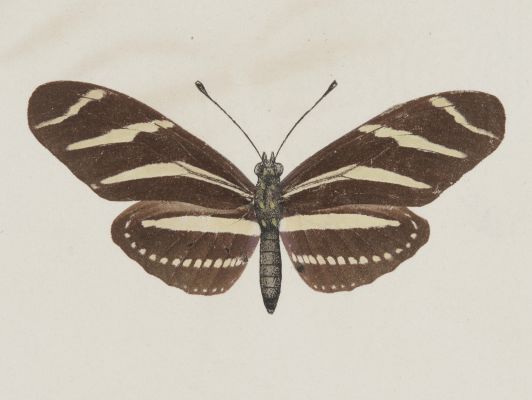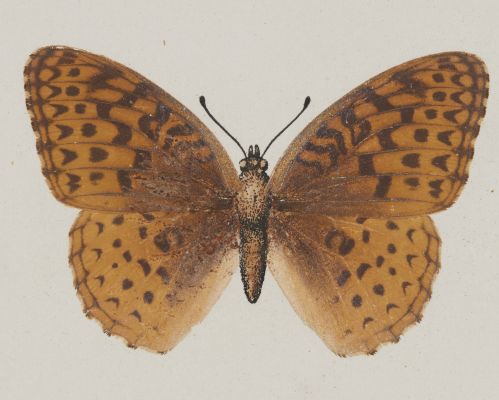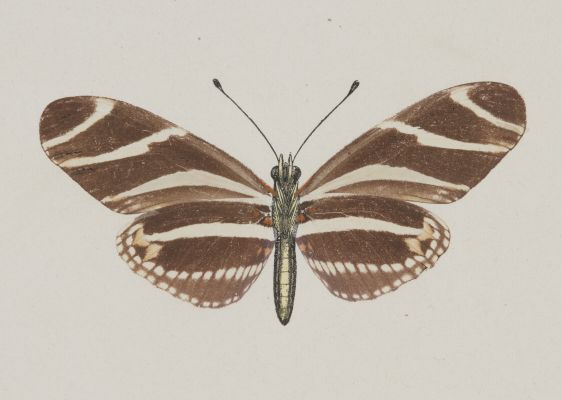
Title
Papilio Cresphontes, upper sideArtist
Denton, Sherman F. (American, 1856-1937)Publication
As Nature Shows Them: Moths and Butterflies of the United States, East of the Rocky MountainsDate
1900Process
Nature Print, Denton ProcessImage Size
10.7 x 7 cm
This is a collection of butterfly and moth illustrations printed by direct transfer from the insects, the creation of a leading innovator in the display of lepidoteral specimens (lepidochromy). A lepidochromy is a butterfly mount that captures a specimen on a white plaster tablet, where it could be pressed under glass, avoiding the mess, smell, and eventual degradation of butterflies and moths mounted on paper using pins. The colored plates, or Nature Prints, used in the work, are direct transfers from the insects themselves; that is to say, the scales of the wings of the insects are transferred to the paper while the bodies are printed from engraving and afterward colored by hand. [1] The publication presents a collection of specimens in a far more portable form than pins that still preserves the color and detail of the insects’ wings. Lepidochromy involved using humidified, relaxed wings and an adhesive such as gum Arabic. By pressing the wings between two prepared papers the dorsal and ventral sides could be separated from each other and the scales, or “feathers”, would remain. Once mounted, the bodies of the insects were drawn in. This type of transfer illustration is classified as a nature print.
References
[1] Denton, Sherman F. As Nature Shows Them: Moths and Butterflies of the United States, East of the Rocky Mountains. Boston: B. Whidden, 1900.











